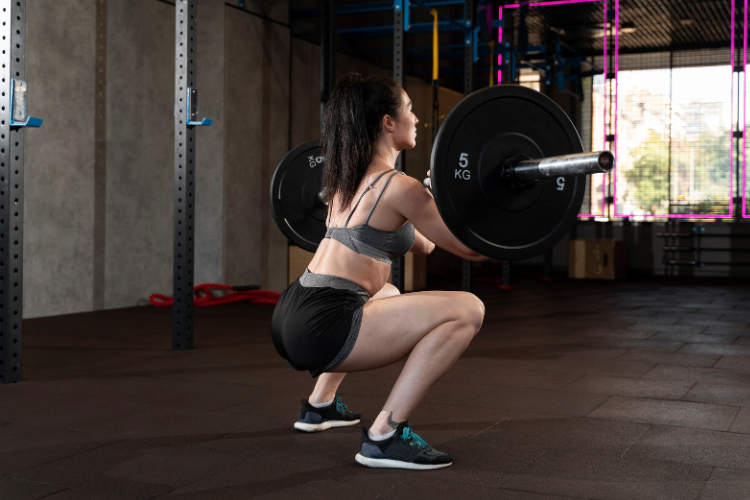Sign up for workout ideas, training advice, reviews of the latest gear and more.






Strength training and muscle building are not just for men. Women can significantly benefit from lifting weights and working on their physical strength. One of the most effective principles for long-term success in strength training is progressive overload. Whether you’re just starting out or have been lifting for years, understanding and applying this principle can help you break through plateaus, enhance muscle tone, and improve overall fitness.
At its core, progressive overload is the gradual increase of stress placed on the body during exercise. The idea is simple: to continue gaining strength and building muscle, you need to challenge your body by gradually increasing the intensity, volume, or resistance in your workouts.
When you first start exercising, your muscles adapt to the stress you’re placing on them. However, if you don’t progressively make your workouts harder, your body will adapt and plateau. Progressive overload ensures you are always pushing your limits to force your muscles to grow and strengthen.
Many women may be hesitant to lift heavy weights due to the fear of becoming “too bulky.” However, lifting weights and progressively overloading muscles won’t lead to excessive bulk but rather help build lean muscle mass, burn fat, and increase overall strength. Here are some of the key benefits of progressive overload for women:
Progressive overload doesn’t necessarily mean lifting heavier weights all the time. There are several methods to apply progressive overload in your workouts:
The most common method of progressive overload is to increase the weight you’re lifting. This doesn’t mean jumping from 10 to 50 pounds overnight, but gradually adding more weight when you feel ready.
For example, if you’re performing squats with a 20-pound dumbbell and you can easily complete 12 reps, consider increasing the weight by 5 pounds. The goal is to lift a weight that challenges you but still allows you to maintain proper form.
Another way to progressively overload your muscles is by increasing the number of repetitions (reps) or sets you perform. If you can do 10 reps of an exercise, try aiming for 12-15 reps the next time. Similarly, you can add an additional set to your workout to increase the overall volume.
Sometimes, it’s not about how much weight you’re lifting but about how well you’re performing the exercise. Improving your form and increasing your range of motion can make an exercise more challenging. For instance, performing deeper squats or controlled lunges can place more stress on the targeted muscles, encouraging growth and adaptation.
Reducing the amount of time you rest between sets can also serve as a form of progressive overload. If you’re resting for two minutes between sets, try reducing that to 90 seconds or one minute. This keeps your muscles under stress for a longer period and increases the intensity of the workout.
Another way to implement progressive overload is by increasing how often you train a specific muscle group. For example, if you’re currently training your legs once a week, you can increase that to two sessions per week to maximize muscle growth.
The key to an effective progressive overload workout routine is focusing on compound exercises that engage multiple muscle groups. These movements offer the greatest potential for adding resistance and challenging the body. Here are some exercises that are perfect for applying progressive overload:
Squats are a fundamental exercise that targets the quadriceps, hamstrings, glutes, and core. To progressively overload with squats:
Deadlifts are a great compound movement that works the hamstrings, glutes, lower back, and core. Progressive overload with deadlifts can be achieved by:
The bench press is an excellent exercise for targeting the chest, shoulders, and triceps. You can apply progressive overload by:
Lunges target the quads, hamstrings, and glutes while improving balance and coordination. Progressive overload can be applied by:
Pull-ups are one of the most effective upper body exercises for strengthening the back, shoulders, and arms. To progressively overload:
Planks are a core-strengthening exercise that also engages the shoulders and glutes. You can progressively overload by:
Here’s a sample 4-week workout plan focused on progressive overload. You’ll perform full-body workouts three days a week, increasing either the weight, reps, or sets each week.
Progressive overload isn’t just about lifting heavier weights — it’s about smart and strategic progression. Here are some tips to make sure you get the most out of your progressive overload workouts:
Keep a workout journal or use an app to log your workouts, weights, and reps. Tracking your progress helps you identify when it’s time to increase the challenge.
Progressive overload places more stress on your muscles, so recovery is essential. Make sure you’re getting enough sleep, staying hydrated, and eating a balanced diet rich in protein to support muscle repair and growth.
Increasing weight or reps is pointless if you sacrifice your form. Prioritize maintaining good technique to prevent injuries and maximize the effectiveness of your workouts.
Progressive overload is a gradual process. Don’t expect to lift double your weight within a few weeks. Focus on consistent, small improvements over time, and you’ll see the results.
To avoid plateaus, vary your workouts. Switch up exercises, change the number of sets or reps, or try new training methods like supersets or drop sets to keep your muscles guessing.
Progressive overload is a powerful tool that helps women build strength, enhance muscle tone, and improve overall fitness. By gradually increasing the intensity of your workouts through weight, reps, sets, or technique, you’ll continuously challenge your body and avoid plateaus. With consistency and dedication, progressive overload will help you achieve a leaner, stronger, and more resilient body, both in the gym and in everyday life. Embrace the process, track your progress, and enjoy the empowerment that comes with pushing your limits.
Stay up to date on the latest women’s health, fitness and lifestyle trends and tips.